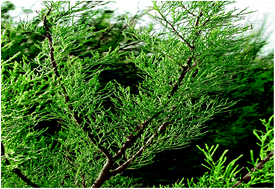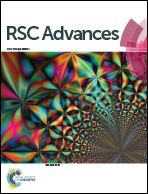Tamarix gallica leaf extract mediated novel route for green synthesis of CuO nanoparticles and their application for N-arylation of nitrogen-containing heterocycles under ligand-free conditions
Abstract
We report the green synthesis of CuO nanoparticles (CuO NPs) using Tamarix gallica leaf extract and their catalytic activity for N-arylation of nitrogen-containing heterocycles with aryl halides under ligand-free conditions. Tamarix gallica leaves are used as a bio-material for the first time as reducing agent. The green synthesized CuO NPs was characterized using the powder XRD, TEM, UV-vis and FT-IR. This method offers several advantages, viz. high yields, simple methodology, recyclability of the catalyst and a simple workup procedure.


 Please wait while we load your content...
Please wait while we load your content...